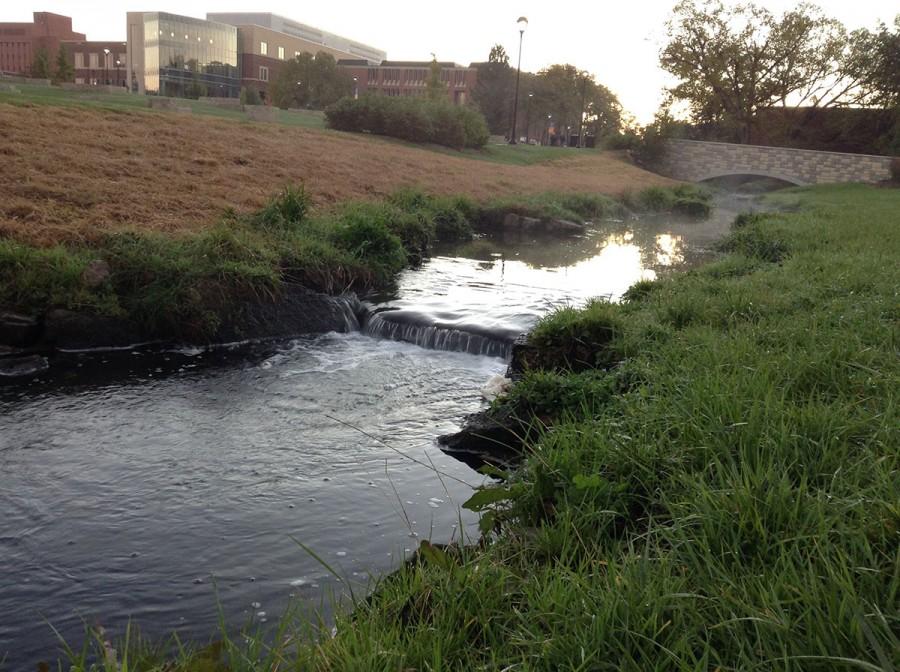Little Niagara River Restoration Project
Facilities Management working on establishing a restoration prairie along Little Niagara
More stories from Andee Erickson
Photo by Andee Erickson
The dead grass along the northern bank of the Little Niagara river outside of the Davies Center marks the beginning stages of a restoration project for the stream.
At this week’s Student Senate meeting, the newly appointed Director of the Student Office of Sustainability, Maria Delgado Gomez, said phase one of the Little Niagara Restoration project is underway.
The aim is to restore the prairie ecosystem and increase the ecosystem’s biodiversity, Delgado Gomez said.
The campus gardener, Daria Hutchinson, said the grounds maintenance service on campus has been in the process of transforming Little Niagara into a healthy stream again since the new Davies Center was being constructed.
When the river was behind the old Davies Center it was forgotten, Hutchinson said. The river’s sides were scoured in a “V”-shape, causing fast-moving water.
However, Hutchinson said the stream has since flattened out on the bottom which allows slower water movement and less erosion.
The beginning phase of the new restoration project involves transforming the section of the stream next to Davies Center into an area of prairie grasses, Hutchinson said.
Although the project originated when the river was rerouted in front of the new Davies Center, there are a couple reasons Hutchinson said they are just moving forward with it now.
“It’s a big cost because it’s not just putting it in it’s the actual management of it,” Hutchinson said. “The other was because we didn’t have the staff to take care of the whole area.”
Facilities management hired consultant firm Prairie Restoration from Minnesota to spray the grass and clover with a form of roundup safe to use around water, Hutchinson said. The firm will come back to seed it with prairie grasses this month.
According to Prairie Restoration, the deep roots of the prairie grasses hold soil well to control erosion.
The south bank of the river will remain as it is and continue to be mowed, allowing student access to the water for research, Hutchinson said.
The maintenance will include mowing the prairie once or twice next year and consistent removal of invasive species carried downstream, Hutchinson said.
“It will be a constant upkeep to get things established. We decided that we were going to do it in stages and that we may never do the entire stream,” Hutchinson said.
The second phase involves the section of the river from the library to Putnam Hall, Hutchinson said. It won’t take place until the first phase is established and effective, which could take a couple years.
Hutchinson said although they don’t have control over the aquatic life in the river, the goal is to have a healthy stream that would be able to host aquatic species.
In other Senate news
Director of Academic Affairs, Allison Wagener, said her commission is continuing to discuss how to create the most effective questions for the unified professor evaluation.
Director Mary-Laura Samples said her Finance Commission will be working with organized activities as liaisons over the next couple weeks to ensure organizations are operating smoothly.
Campus Affairs Director Joe Cianciolo said his commission is looking to expand utilization of the Blusync website since only 10 percent of the websites capabilities are being used.
Blusync allows student organizations to post their constitutions and share meeting times and locations as well as the contact information of members.


